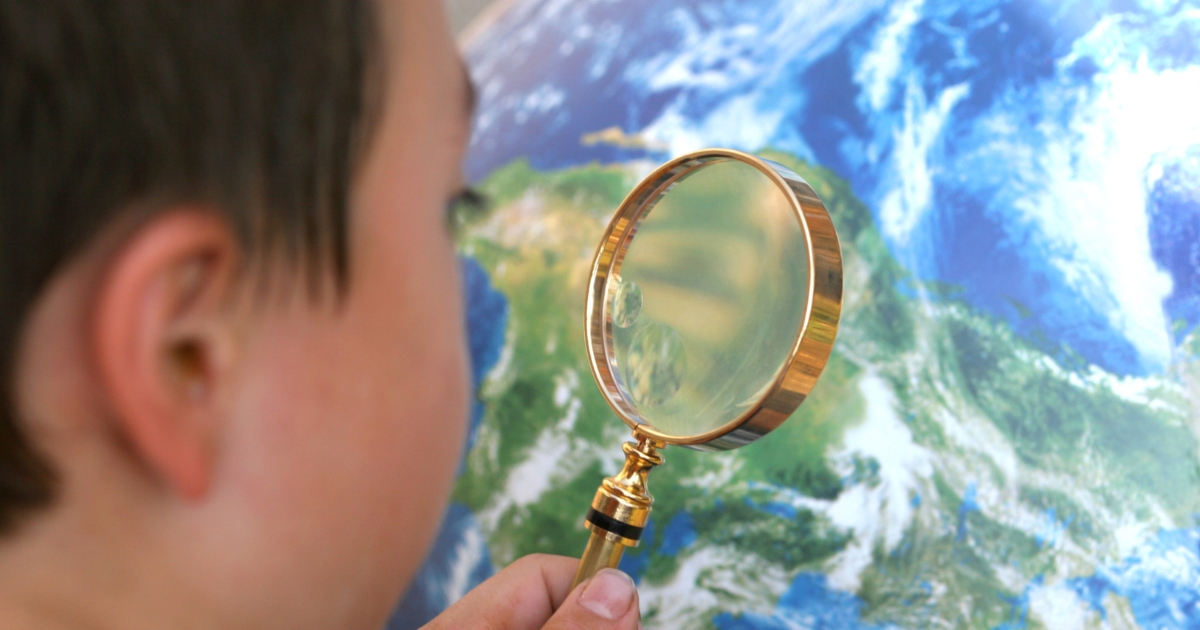Teaching high school geography in a homeschool setting offers parents and students the chance to explore the world in creative and meaningful ways. By incorporating hands-on projects, teens can deeply engage with cultures, landmarks, and global systems, fostering both knowledge and curiosity.
Below, we explore five effective and fun world geography projects for homeschoolers that emphasize critical thinking, creativity, and practical learning.
1. Create A Physical Geography Map Model
High school students learn best when they can see and interact with what they’re studying. A physical geography map model project allows teens to explore landforms, water bodies, and elevation through a tactile experience. The goal is for them to create a three-dimensional map of a selected region or country.
Steps to Implement:
- Choose a Region: Select a specific region, such as a continent, country, or even a single state, depending on the focus of your curriculum.
- Gather Materials: Use items like clay, salt dough, foam board, or even recycled cardboard for the base. For differentiation in elevation, students can layer or sculpt these materials. Paints, markers, and labels help add detail.
- Identify Key Features: Have students research major landforms like mountains, plains, rivers, and deserts in their selected area.
- Design and Build: Encourage creativity during the building process, using various colors and textures for terrain features.
- Add Context: Label physical features and create a legend for the map to enhance its educational value.
This project emphasizes essential skills like research, spatial thinking, and artistic expression. Additionally, it makes an excellent collaborative project for siblings or homeschool co-ops.
2. Host A “Cultural Day” Presentation
Understanding human geography is just as important as studying physical geography. Hosting a “Cultural Day” presentation at home allows students to explore traditions, languages, and lifestyles from around the world. This project can be tailored to suit your child’s interests and learning goals.
How to Organize the Project:
- Research a Country or Culture: Each student (or a group if in a co-op) selects a culture they want to study in-depth. Encourage them to focus on topics like traditional clothing, food, history, and language.
- Create a Visual Presentation: Teens can create a slideshow, display board, or even make a short video about the culture they’ve studied. Include visuals such as photos, maps, and art that represent the chosen culture.
- Prepare a Demonstration: Bring the research to life. For example:
- Cook a traditional meal together and explain its cultural significance.
- Showcase apparel or crafts that are iconic to the region.
- Learn a few simple phrases in the language spoken there.
- Present to an Audience: Whether it’s just family, a homeschool pod, or through a virtual video call with extended relatives and friends, provide your student the opportunity to share these presentations.
By exploring diverse ways of life, teens not only enhance their knowledge of global cultures but also improve public speaking and networking skills.

3. Build A History And Geography Time Capsule For A Country
A time capsule is a unique way to combine historical and geographical learning. For this project, students will create an imaginary “time capsule” that represents a specific country at a chosen point in history. Ask your child to research what their chosen country was like during a particular era, such as 18th-century France, the Age of Exploration, or modern Japan.
Inside their time capsule, they might include mini artifacts, replicas, or descriptions of specific items that symbolize important aspects of that period. For example, an Ancient Egyptian time capsule might feature a handmade scroll detailing farming practices, a drawing of the pyramids, and a model of a canopic jar. Encourage students to explain the “significance” of each item in a written format or a small presentation. This project teaches historical context while anchoring that information to the physical geography of the area, making it easier for your teen to connect the two concepts.
4. Design An Interactive Global Trade Map
Global trade is a dynamic topic that helps high school students understand how countries interact and depend on one another economically. An interactive trade map allows students to explore trade relationships worldwide, tracking the flow of goods and resources between nations.
Steps to Build the Project:
- Choose Key Resources: Start by identifying a type of resource or product to focus on, such as oil, coffee, textiles, or electronics.
- Research Trade Routes: Using online resources, homeschoolers can research where the resource is commonly produced and which nations import it the most.
- Create a Map: Use a physical world map (or print one out) and outline trade routes using string, yarn, or markers. Use different colors to represent the export and import routes.
- Add Context: Along the trade routes, create small write-ups explaining the significance of trading relationships. For instance, if focusing on coffee, explain why Colombia is a major exporter or examine the environmental impact of transporting goods around the globe.
- Make it Interactive: Build a quiz or trivia element related to the trade map. For example, students could challenge family members to trace specific routes or guess which countries are involved in trading certain products.
This project makes abstract ideas about global economics tangible and teaches students critical skills in data analysis, research, and map reading.
5. Explore Biomes Through A Digital Presentation Or Creative Diorama
Studying biomes is a fascinating way to connect geography and environmental science. Assign each student a specific biome, such as tundra, rainforest, savanna, or desert, and have them create an in-depth study. Teens can choose to present their findings through a digital presentation or a hands-on diorama model.
For the digital version, students can put together a slideshow using photos, data, and short write-ups about the climate, wildlife, and natural resources found in each biome. Alternatively, a diorama offers a highly creative and tactile approach; they can use everyday materials like cardboard, cotton balls, and craft supplies to recreate the biome’s landscape. This project highlights the connections between geography and biodiversity, helping students understand ecosystems on a global scale.
Tips for Success with Geography Projects at Home
To make world geography projects truly successful in your homeschool, it’s essential to create an environment where learning is engaging, organized, and efficient. Here are some practical tips to help ensure your geography activities thrive:
- Establish a Plan:
Before starting a project, outline goals and expectations. Decide on the specific geography skills or topics you want your child to learn. Break the project into manageable steps and set a realistic timeline for completion. - Use Quality Resources:
Invest in diverse resources such as atlases, globes, online geography tools, and educational apps. Reference videos, documentaries, and interactive websites that complement your chosen project. Platforms like Google Earth and National Geographic are valuable for visual and interactive learning. - Stay Hands-On:
Encourage active participation by incorporating hands-on activities. Whether it’s building 3D maps, creating travel brochures, or cooking traditional dishes from different cultures, these activities make learning memorable and fun. - Encourage Independent Research:
Foster critical thinking and research skills by allowing your high schooler to gather information on their own. Guide them in using trustworthy sources, but also give them space to explore topics that capture their curiosity. - Incorporate Group Work:
If possible, collaborate with other homeschooling families on larger projects. Group activities provide opportunities for social interaction, teamwork, and new perspectives. - Set Up a Geography Workspace:
Dedicate a specific area in your home for geography projects. Have materials like maps, colored pencils, pins, and rulers readily available to minimize interruptions during project time. - Integrate Technology:
Use apps like Kahoot for geography quizzes, or explore VR tools that offer virtual tours of famous landmarks. Technology can turn a standard project into an interactive experience that boosts engagement. - Celebrate Milestones and Accomplishments:
Acknowledge your child’s efforts and progress throughout the project. Host an end-of-project celebration to showcase their work, whether it’s presenting maps, sharing written reports, or displaying artwork inspired by their studies. - Encourage a Global Mindset:
Inspire discussions about world cultures, current events, and global challenges. This adds depth to geography projects and connects academic learning to the real world.
By emphasizing practical and creative approaches, these projects not only teach geography but also inspire curiosity and a lifelong interest in the world. High school geography becomes far more engaging when students can explore it in ways they find exciting and meaningful.
Making Learning Engaging
Exploring world geography through hands-on projects not only makes learning more engaging but also helps your high schooler connect with the world around them. These five activities are designed to spark curiosity, foster creativity, and deepen your student’s understanding of geography in meaningful ways. We encourage you to try these projects and see the difference they can make in your homeschool.
Don’t forget to share your experiences with us—we’d love to hear how these ideas come to life in your home! Keep exploring, learning, and making connections with the world.





